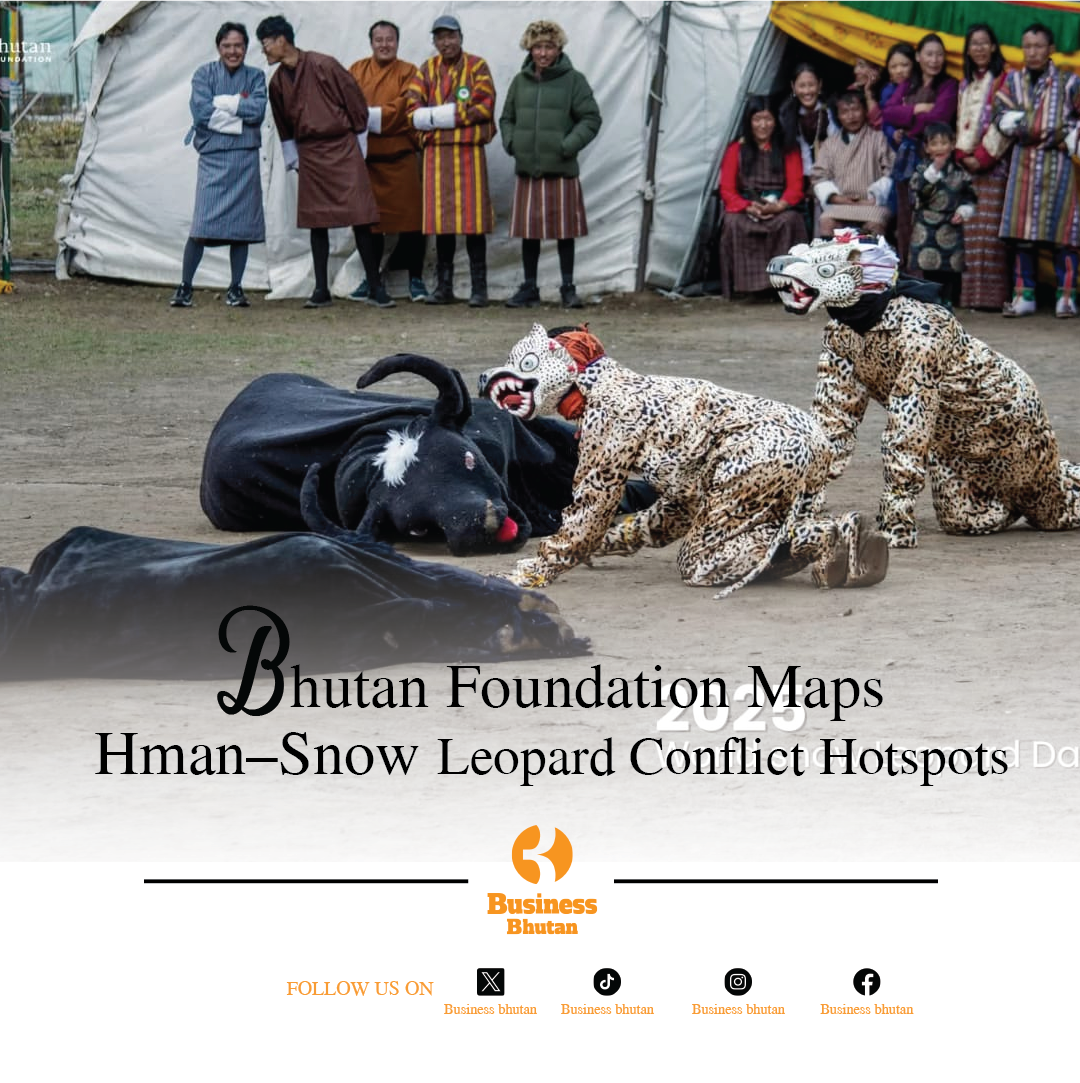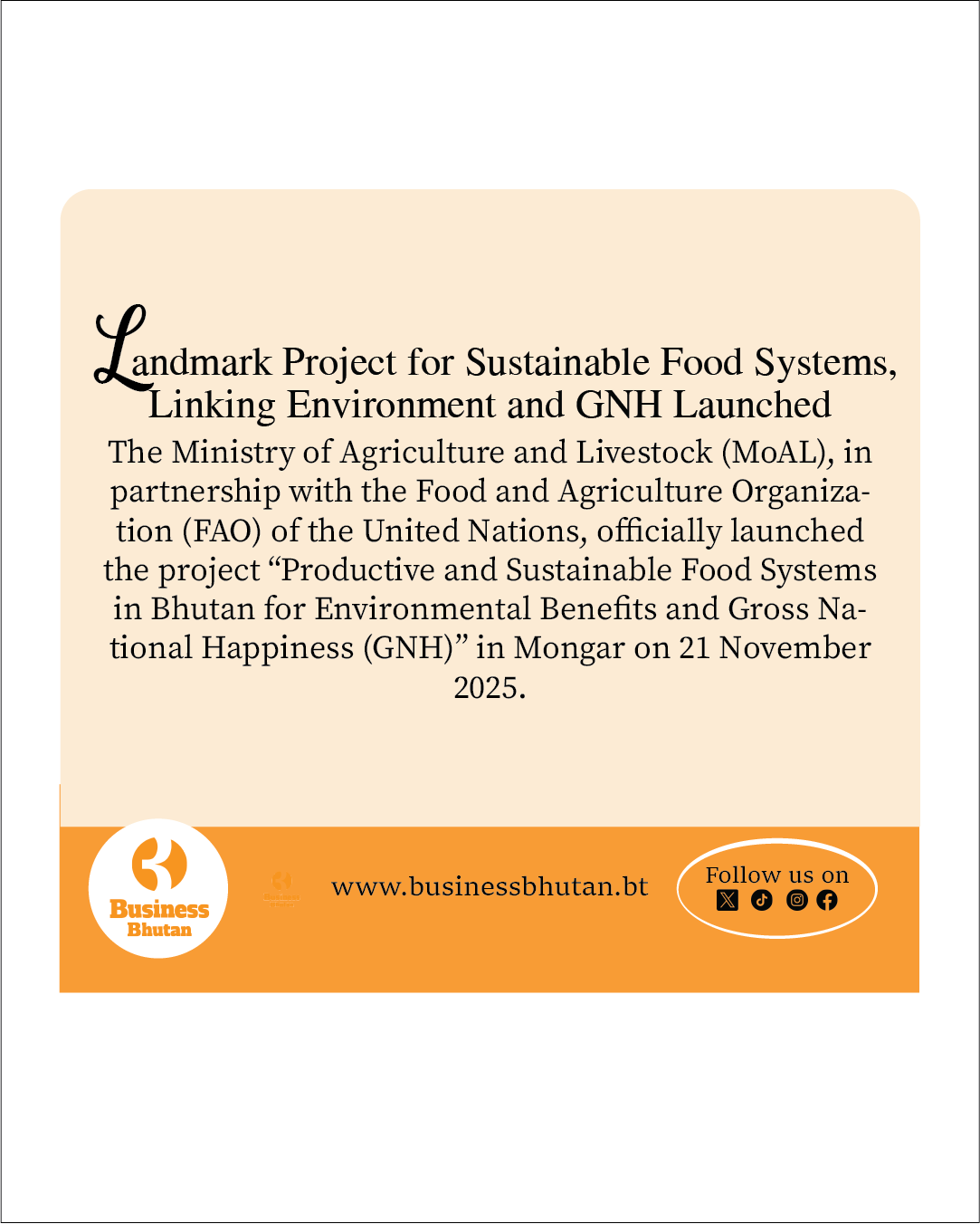In a pioneering effort to safeguard both wildlife and livelihoods, the Bhutan Foundation has launched a scientific initiative to map human–snow leopard conflict hotspots across the country. The project marks a significant step in Bhutan’s commitment to balance biodiversity conservation with the needs of highland communities.
Titled “Mapping Human–Snow Leopard Conflict Hotspots,” the initiative aims to identify areas where interactions between people and snow leopards are most frequent and impactful. Hotspots are determined not only by the number of incidents but also by their consequences, including livestock loss, economic damage, and threats to human safety.
“The primary objective is to produce a detailed distribution map of conflict hotspots,” said Sangay Chedar, Programme Manager at the Bhutan Foundation. “This map will serve as a strategic tool to guide targeted interventions, improve resource allocation, and support evidence-based planning of mitigation measures.”
While human–wildlife conflict mapping is being undertaken for several species, this phase focuses on snow leopards due to their recurrent interactions with alpine communities. These elusive predators, often venturing near human settlements at high altitudes, can prey on livestock, creating significant economic challenges for herding families.
“Understanding where and why these conflicts occur allows us to design better solutions that protect both livelihoods and snow leopard populations,” Chedar added.
Field surveys are currently underway, with trained enumerators collecting site-specific data on human–wildlife interactions. Survey protocol design and enumerator training were completed in September and October, with data collection set to conclude by the end of November. Analysis and final hotspot mapping will be published in December, providing a comprehensive spatial overview of conflict-prone regions.
The initiative is funded by the Bhutan Foundation, with the broader national-level human–wildlife conflict mapping project supported jointly by Bhutan for Life and UNDP Bhutan. Together, these organizations aim to provide a holistic understanding of conflict patterns to guide both policy and community-level interventions.
Beyond research, the Bhutan Foundation has been working directly with communities to foster coexistence. 232 improved tents have been distributed to nomadic herders, enhancing comfort and resilience in harsh alpine conditions. Solar-powered predator-proof corrals have been installed for 40 households, reducing livestock losses while introducing sustainable energy solutions. A Sustainability Plan for the Jomolhari Mountain Festival is underway to ensure the legacy of 11 successful Snow Leopard Festivals continues to promote conservation and community pride.
These initiatives are part of the Promoting Ecological and Community Engagement (PEaCE) program, which seeks to strengthen community-led conservation models through local leadership and international collaboration.
Snow leopards, often called the “elusive guardians of the high mountains,” symbolize balance in fragile Himalayan ecosystems. Protecting these magnificent cats means protecting the ecosystems and the communities that share their home, the Bhutan Foundation notes.
As Bhutan deepens its commitment to conservation, the mapping of human–snow leopard conflict hotspots represents a critical step toward coexistence, where humans and wildlife can thrive together. In a landscape as majestic as it is fragile, this initiative reflects Bhutan’s enduring vision: a future defined not by conflict, but by harmony between people and nature.
Sangay Rabten
From Thimphu




![Fresh Beginnings: Pasakha Vendors Gear Up for New Vegetable Market - Duplicate - [#16963] Fresh Beginnings: Pasakha Vendors Gear Up for New Vegetable Market - Duplicate - [#16963]](https://businessbhutan.bt/wp-content/uploads/2025/11/Asset-200.png)











